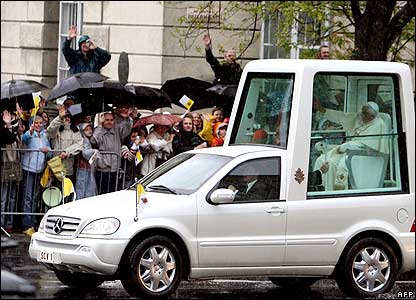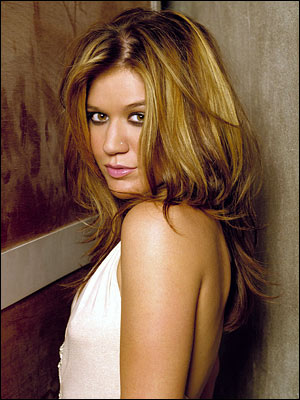By Francis X. Rocca
Religion News Service
VATICAN CITY — For more than two decades, Pope Benedict XVI served as one of the closest and most influential subordinates to his predecessor, John Paul II, a relationship built on common priorities, affection and mutual respect. Only weeks after John Paul’s death in 2005, Benedict opened the process that might eventually make John Paul a saint.
Yet for all his admiration for the man who came before him, Benedict has displayed his own markedly different style of leading and communicating. One Vatican observer says the two pontiffs represent two distinct personality types.
“ohn Paul had all the traits of an extrovert,” including gregariousness and a flair for spectacle and symbolic gestures, said the Rev. Keith F. Pecklers, an American who teaches at the Pontifical Gregorian University in Rome. Whereas the private, deliberative and self-restrained Benedict is, according to Pecklers, “very much of an introvert.”
John Paul reveled in the presence of other people, celebrating open-air Masses before hundreds of thousands. He tried to physically touch as many as possible among the devoted crowds. Starting with early morning Mass and going all the way through dinner in the papal apartment, John Paul spent a typical day surrounded by dozens of personal guests.
The contrast was striking at the start of Benedict’s reign, nearly three years ago, when the new pope appeared uncomfortable with the public at his weekly audiences, hesitating to offer his hand even to children. While he has grown noticeably more relaxed, Pecklers says, the pope still prefers to meet others one-on-one or in small groups.
Benedict is literally less outgoing than his predecessor when it comes to international travel. No one expected him to match the globe-trotting of John Paul, who was 20 years younger when he became pope and visited 104 countries outside Italy during his reign.
But even after his journey to the U.S., Benedict will have taken only eight papal trips abroad in three years — three fewer than John Paul took at the same age, even as he suffered from advanced Parkinson’s disease and other ailments.
Though Benedict sometimes offers Mass in large open spaces — he will celebrate two during his April trip to the U.S., at Nationals Park in Washington and New York’s Yankee Stadium — he generally prefers the traditional venue of a church, saying super-sized crowds pose risks for the “dignity that is always necessary for the Eucharist.”
In his approach to the liturgy, the pope shows a conservatism and regard for tradition characteristic of many introverts. He has encouraged the celebration of Mass in Latin and the singing of medieval Gregorian chant, and has expressed reservations about adapting Catholic worship to blend with the customs of non-Western cultures.
John Paul, by contrast, often presided over liturgies with displays of dancing (that in the words of the National Catholic Reporter’s John L. Allen Jr. reminded observers of “Broadway production numbers”). At one celebration in Mexico in 2002, Indian women performed an indigenous purification ceremony equivalent to an exorcism on the pope. Such scenes, Pecklers acknowledges, are hard to imagine in Benedict’s presence.
In the pulpit, the scholarly Benedict shows his long background as a theology professor and head of the church’s highest doctrinal office, as well a cerebral nature that is common among introverts.
“John Paul was less theological and more devotional in his preaching,” Pecklers said. Where John Paul’s sermons were typically prayerful reflections on Scripture, Benedict frequently offers lessons on the teachings of St. Augustine and other church fathers.
Benedict’s inclination toward complex intellectual argument can conflict with communicating with the wider public. If John Paul’s most famous words were the simple yet powerful “Be Not Afraid!”, Benedict’s may be a 14th-century description of the Prophet Muhammad’s legacy as “evil and inhuman.” Unlike the media-savvy John Paul, Benedict is no master of the sound-bite.
Ironically, Benedict’s introversion may have helped earn him a reputation as a clothes horse. He’s been dubbed the “Prada Pope” for a pair of red loafers that media reports attributed to the Milan-based fashion house. Though he has donned some designer items presented to him as gifts (Gucci sunglasses, among others), his most attention-grabbing garments include a red velvet cape and two red hats that in some eyes suggested Santa Claus or the Marlboro Man.
The hats and cape were actually pieces of traditional papal regalia shelved by John Paul but revived by his successor, who has also resumed ceremonial use of the papal throne. In dress as in other aspects of his public persona, Benedict’s style is to emphasize not his own unique attributes but those of the ancient role that has fallen temporarily to him.
Copyright 2008 Religion News Service. All rights reserved. No part of this transmission may be distributed or reproduced without written permission.
More from Beliefnet and our partners

